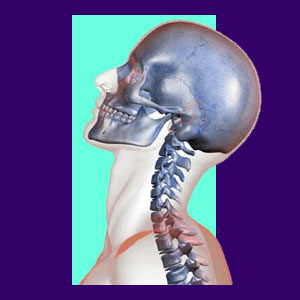
Cervical lordosis describes the degree of front to back curvature expressed by the neck region of the human vertebral column. However, the term can also be used to diagnose an exaggerated and atypical inward curvature of the neck region in rare instances, although the proper diagnosis would be cervical hyperlordosis. While it is normal and healthy for the cervical spine to demonstrate a lordotic curve, some patients have an exaggerated curvature, while others might have a decreased curvature. These increased or decreased curvatures are rarely health concerns and their existence is often completely unknown to the patient for years.
Atypical curvature conditions are often discovered during routine examinations or imaging studies completely unrelated to any back ache syndrome. This essay will help provide an overview of the variations of curvature which may be experienced in the cervical spinal region.
Cervical Lordosis Conditions
The neck is designed to curve in order to provide greater shock absorption and weight bearing abilities. The head is rather heavy and is moved regularly at angles which place great stress upon the thinner vertebrae and intervertebral discs of the cervical spine. The natural lordotic curvature of the neck helps to distribute these stresses to prevent neck injury or muscle strain.
Hyperlordosis in the neck is a deeper than normal curvature from back to front. The head might appear to be pushed forward and possibly slightly lower between the shoulders. The chin is often prominent and the patient might appear to be purposefully extending their neck in a forward direction.
Meanwhile, hypolordosis is more common and describes a condition in which the normal neck curvature is decreased, lost or even reversed.
Cervical Lordosis Symptoms
Typically, there are no neck symptoms or pain associated with minor versions of exaggerated or decreased cervical curvature. Most patients either do not know they have an atypical cervical lordotic condition or are aware of it simply from the postural identifiers associated with the condition.
Only a small percentage of patients actually experience any pain related to their unusual cervical curvatures. Many of those who do have some pain might actually be suffering from the nocebo influence incurred during the diagnostic procedure, rather then from the condition itself. The very few with severe hyper or hypolordotic curves might experience true physical pain due to this rare condition.
Cervical Spinal Curvature Advisory
Most patients do not require any special care for their exaggerated or decreased neck curvatures. Some might benefit greatly from postural physical therapy in order to create a more typical anatomical appearance. Conservative therapies will rarely change the curve, but can help a patient to use their neck muscles to present a far more normal posture.
Severe cervical lordotic curves might require drastic treatment. Make sure to discuss the risks and complications of any prescribed procedure with your doctor. Surgery is to be avoided in all but the most severe cases.
Spinal fusion might solve the problem of an ever-worsening exaggerated curve, but may do so at the expense of creating many additional complications. Be extremely careful when considering surgery as a possible unusual lordosis treatment.




